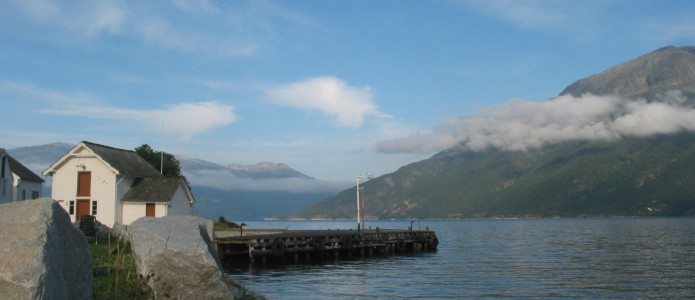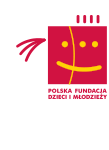
How do Norwegian non-governmental organisations activate their residents and encourage them to take action to support their surroundings? How does Little Red Riding Hood help protect the environment? Just a handful of observations following a study visit to Oslo and Fredrikstad… Robert Buciak of the Green Mazovia Association (Stowarzyszenie Zielone Mazowsze) shares his impressions.
We met representatives of the Naturvernforbundet (Norwegian Association for Nature Protection). This is an organisation over one hundred years old, with a membership of over twenty thousand, the largest and oldest ecological organisation in Norway. Many of us dream of being part of such a strong and stable organisation, a role model of civic participation in such an important area of public life. As part of our trip to Norway, we visited the national headquarters of the organisation as well as its local chapter in the capital city.
During our visit to the local chapter, we were exposed to work our Norwegian colleagues engage in on a daily basis to the purpose of protecting green areas against the overspill of urban development, and of promoting sustainable transportation. The organisation has a rather astonishing way of convincing local residents to protect woodlands. They make people love forests by making them a thing of fairytales. It has been duly noted that children – and their guardians – are much more inclined to protect a forest once it triggers associations with Little Red Riding Hood. The chief goal of Oslo nature conservationists when it comes to means of transport, on the other hand, is to encourage people to use electric bicycles. Power-driven bikes make crossing Norwegian mountainous regions much easier. We asked numerous questions about how activities are organised, how efficient they are, how broad the scope of working with the local government is, and what the overall condition of Oslo’s cycling infrastructure looks like. As it turns out, obstacles faced by Norwegians resembles those we ourselves have to deal with. Both countries have a growing population of the elderly. To keep our senior citizens fit, we should promote cycling, and lobby for the development of safe and duly separated cycling lanes, although streets are frequently too crowded to accommodate them.
We noticed major differences in energy efficiency management – another subject we discussed with Naturvernforbundet members. Poland differs from Norway in terms of energy sources, the efficiency of urban energy use, and the overall state policy. Yet it was very inspiring to learn about the financial and environmental benefits of better street lighting, construction of energy-positive schools and kindergartens, and abandonment of oil field development in tourist regions. For example, the use of state-of-the-art street lighting allowed an improvement in visibility and thus in safety – as well as a quadruple cost reduction.
The remaining part of our visit was spent visiting local communities successful in activating their residents. In the district of Sagene, we met local government employees responsible for parks and physical planning. Co-operating with local residents is their modus operandi. As a result, the locals have begun creating park sculptures and developing community gardens on their own initiative. Today, the district has nearly one hundred community gardens! Inviting local officials to the local community club café centre for consultation purposes yielded brilliant results. We would love such direct contact with our local representatives in Poland as well.
The Furuset residential housing estate was another example of how a variety of building functionalities can morph into one another. The Furuset underground station and shopping mall has been streamlined with a library doubling as a culture club and residential council session venue. Any guest to the library can select a book off the shelf, watch a movie, or record music on a personal device. Anyone over fifteen is eligible for a library passcard, usable from 07:00 a.m. until 11:00 p.m. This makes life easier for all youngsters whose homes are not an ideal place to study. Local residents have been offered wonderful conditions for self-development, and apparently it is an opportunity they are happy to take advantage of. Cultural venues placement at public transportation hubs is a novelty in Poland, one definitely worth fostering.
We also spent half a day outside Oslo. We travelled to Fredrikstad to learn the ins and outs of Norway’s participation budget. Its volumes are considerably lower than in Poland, its objectives distinctly different. To date, Fredrikstad launched three campaigns involving children and young people in the decision-making process concerning the city’s money. In each case, the issue involved the design of particular space. Children and young people were given an opportunity to put their own ideas forward during creative workshops, and to vote for one of the solutions tabled. Getting the youngest fry involved in democratic processes allowed the city i.a. to renovate a skateboarding hall and playground to exact user needs. It would be worth our while to follow the example, if only to showcase the option of making a number of formerly excluded groups part of the decision process. Notably, social consultation themes in Norway and in Poland are rather similar. In both countries, local residents believe that green areas next door to where one lives are of fundamental importance: this is where children can play and adults can relax. We have also noticed that the scale of formal social consultation processes back home is much better-developed than in Norway.
The trip allowed watchdog organisation members to take a closer look at a country which operates in an entirely different world when it comes to social and economic reality, to exchange opinions with our hosts, and to establish organisation-to-organisation contacts. The visit brought a number of inspiring experiences, and one can only hope that it will help resolve many issues big and small Poland suffers of.
By Robert Buciak
The visits to Oslo and Fredrikstad took place in October 201, as part of the Citizens for Democracy programme financed with the use of EEA funds. The purpose of the visit was to exchange experience and establish co-operation with organisations from Norway.




